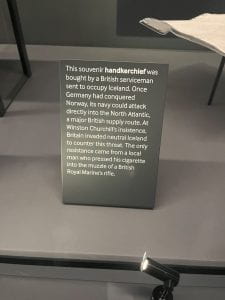Since Great Britain functioned as a major power in World War II, the abundance of World War II museums throughout the nation came as no surprise. Throughout our stay in London, our group visited the Imperial War Museum and Bletchley Park. A common theme among the sites listed was their praise for the common Brit. Similar to museums around the world, Great Britain’s museums had one predictable characteristic: overt nationalism.
National bias surged throughout the exhibits of Bletchley Park, which functioned as the center of British intelligence during the war. For example, one exhibit discussed the involvement of intelligence in turning of the tide of the Atlantic war. The texts examined how intelligence from Bletchley Park identified the location of German U-boat wo
lf packs, which in turn affected the packs’ efficiency as the Allies zoned in on their coordinates. This exhibit praised the work of British intelligence but never mentioned the occurrences where intelligence from Bletchley remained indifferent in situational outcomes. As historical knowledge continued improving, museum exhibits included critical interpretations of national histories.
Although the museum never completely renounced injustices committed in the British colonies, the Imperial War Museum told an accurate narrative of Britain’s reliance on these colonies during the war. The exhibit centered on the concept that Britain was “never truly alone.” It discussed the importance of the colonies in resource generation and providing troops for wars in the Pacific, North Africa, and the Mediterranean. Although this was not critical of the atrocities committed by the British empire, it challenged the nationalistic notion that Britain survived the war on the strength of solely mainland citizens.


